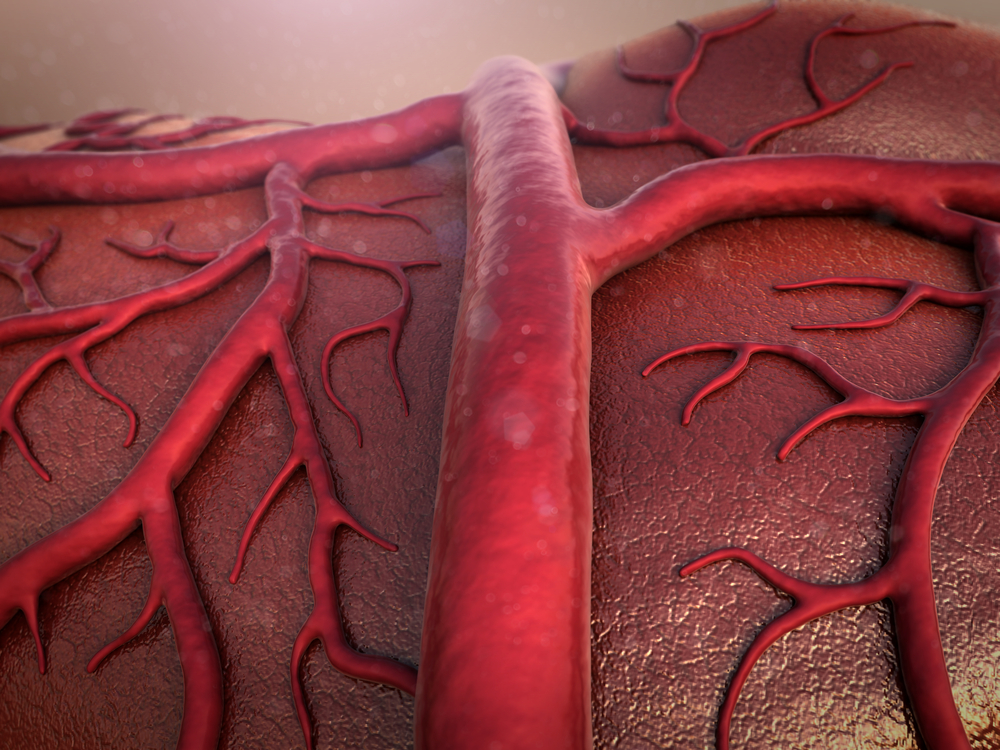Parkinson’s Disease Symptoms Traced to Excess Blood Vessel Formation

Lund University researchers have shown that cerebrospinal fluid (CSF) biomarkers of angiogenesis are raised in Parkinson’s disease (PD) patients and are related to walking and balance difficulties, blood-brain barrier (BBB) increased permeability, and white matter lesions (WMLs). The research study, entitled “Increased CSF biomarkers of angiogenesis in Parkinson Disease” was published in Neurology.
Angiogenesis, i.e., the formation of blood vessels, has been linked to PD pathogenesis — post mortem analysis of patient’s brains has identified increased numbers of nuclei from endothelial cells, blood vessels and increased levels of specific angiogenesis biomarkers. But angiogenesis’ role in PD is not yet completely established and understood. As such, the scientists used biological assays to measure different biomarkers of angiogenesis in CSF samples from PD patients with and without dementia, and compared them to disease-free controls. Additionally, the correlation of these markers’ levels with balance problems (a frequent PD symptom), BBB permeability, and brain lesions was also investigated.
In the first part of the study, 100 PD patients and 38 healthy controls were assessed, with results further repeated in two similar-size groups of patients. The analysis showed that in PD patients with or without dementia, VEGF (vascular endothelial growth factor), PlGF (placental growth factor), and sVEGFR-2 (a VEGF receptor) levels were elevated while Ang2 (angiopoietin 2) levels were decreased when compared to healthy controls.
The data is in line with previous findings of angiogenesis evidence in PD, and with the fact that Ang2 factor is associated with BBB stability maintenance. Moreover, VEGF has been shown to induce vascular leakage and increased BBB permeability (BBB dysfunction is associated with the onset of PD). In BBB dysfunction, blood components can leak into the brain and cause tissue lesions, leading to neuronal damage and neurodegeneration.
Researchers found that PD patients with orthostatic diastolic hypotension, which might lead to episodes of cerebral hypoxia (low oxygen levels), also present increased levels of VEGF and PlGF when compared to PD patients without this pathology. Hypoxia has been hypothesized as one of the main causes of angiogenesis in the brain, a theory that can be corroborated with this study’s findings of elevated angiogenic factors. The same correlation was found for white matter lesions (WMLs), which are associated with posture instability and walking problems, significantly more pronounced in PD patients’ brain with elevated angiogenesis biomarkers. Moreover, increased levels of VEGF and PIGF were correlated with increased markers of neurodegeneration.
In the future, researchers intend to test angiogenesis drugs in animal models as possible therapies for Parkinson’s disease treatment. “Medication for angiogenesis already exists. If we can confirm our results in further studies, these drugs can be tested on Parkinson’s patients in the future,” Dr. Oskar Hansson, reader at the Lund University, Sweden, said in a press release.






